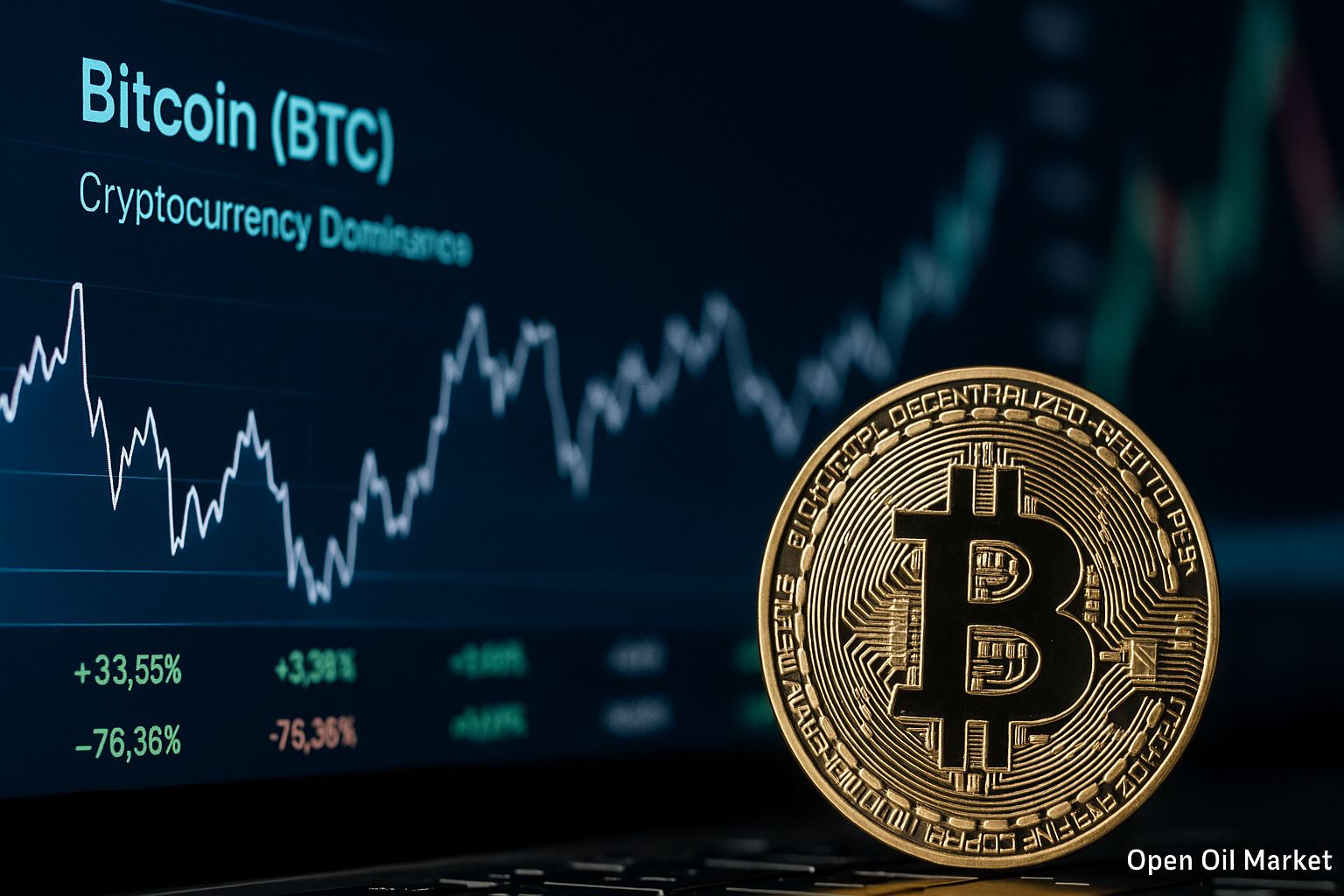
Current Cryptocurrency News as of November 10, 2025: Bitcoin Holds Around $100,000, Ripple Awaits XRP ETF Launch, Rising Interest in DeFi, and Market Consolidation of NFTs. Overview of the Top 10 Cryptocurrencies and Key Trends.
The cryptocurrency market begins a new week in a state of cautious equilibrium. Following an all-time rally in October, investors are observing a correction: the total market capitalization currently stands at approximately $3.5 trillion, slightly below the peak values of last month. Bitcoin remains around the psychologically significant mark of $100,000, while the dynamics of altcoins are mixed. Let’s take a closer look at the main events and trends impacting the cryptocurrency market as of the morning of November 10, 2025.
Bitcoin Around $100,000 Following Record Rally
The flagship cryptocurrency Bitcoin (BTC) reached an all-time high (above $120,000) in October; however, it then experienced a moderate correction. Over the weekend, BTC traded around $102,000, occasionally dipping below the $100,000 threshold under profit-taking pressure. The current price hovers in the $100,000–$102,000 range, approximately 20% below recent peaks. Despite the pullback, Bitcoin continues to show colossal growth since the beginning of the year, maintaining a dominant share (~58%) in the total cryptocurrency market capitalization. Volatility has increased: the fear and greed index has dropped into the "fear" zone, reflecting a shift in sentiment from euphoria to caution.
The fundamental factors for Bitcoin remain positive. In the United States, official support for cryptocurrencies is strengthening: President Donald Trump has declared his intention to make the States a "Bitcoin Superpower," while Senator Cynthia Lummis has proposed creating a strategic reserve in BTC to strengthen the country’s financial balance. Institutional demand is also rising—following the launch of spot BTC ETFs, leading funds are once again recording capital inflows. Thus, even with a temporary slowdown in growth, Bitcoin remains an attractive asset amid expectations of a loosening monetary policy from the Fed and its status as "digital gold" in conditions of economic uncertainty.
Top 10 Most Popular Cryptocurrencies: Main Trends
Beyond Bitcoin, other leading digital currencies stand out in the market. Below is the current overview of the top 10 most popular cryptocurrencies by capitalization and recent events:
- Bitcoin (BTC) – ~$100,000. Bitcoin continues to dominate the market, holding a capitalization of around $2 trillion. Consolidation is observed following record highs.
- Ethereum (ETH) – ~$3,300. Ethereum remains the largest altcoin and foundational platform for DeFi and NFTs. The price of ETH has corrected over the week (previously exceeding $3,500), but the network continues to attract high demand due to updates and the development of second-layer solutions.
- Binance Coin (BNB) – ~$950. The native token of the Binance exchange is nearing its historical maximum (~$1,000). BNB is backed by the broad ecosystem of Binance Smart Chain and the services of the Binance exchange, showing steady growth despite some regulatory risks surrounding the company.
- Ripple (XRP) – ~$2.20. XRP is among the leaders in dynamics due to expectations of the launch of the first spot ETFs for this token as early as mid-November. Major investment firms have submitted corresponding applications, and the market is pricing in potential regulatory approval. Furthermore, Ripple announced a partnership with Mastercard to use its stablecoin (RLUSD) in transactions during the Swell conference, enhancing investor confidence in the XRP ecosystem.
- Solana (SOL) – ~$158. Solana has solidified its position as one of the largest smart contract platforms. SOL has more than doubled over the year, recovering from last year’s challenges. Recently, the price exceeded $150, although there was volatility last week. The Solana ecosystem is actively developing and attracting DeFi and NFT projects, maintaining interest in the coin.
- Dogecoin (DOGE) – ~$0.16. The meme cryptocurrency Dogecoin continues to rank highly due to a strong community and support from well-known figures. Elon Musk once again drew attention to DOGE last week, hinting at the forthcoming launch of the "DOGE-1" mission to the Moon. This backdrop provided a short-term price surge for Dogecoin, although it subsequently retreated partially.
- Tron (TRX) – ~$0.28. The Tron blockchain remains among the leaders in popularity, particularly in Asia. TRX has increased significantly over the last few months, with the network's capitalization estimated at around $27 billion. The platform is known for low fees and is actively used for stablecoin transactions.
- Cardano (ADA) – ~$0.54. The Cardano platform continues to develop systematically and implement new technologies. The ADA coin is trading around $0.50, demonstrating moderate growth over the year. The Cardano community remains highly active, although in the short term, ADA mirrors market dynamics without sharp spikes.
- Litecoin (LTC) – ~$250. One of the oldest altcoins, Litecoin, is attracting renewed investor attention. LTC is referred to as "digital silver," and its price has risen significantly in 2025. The launch of new investment products based on Litecoin has also supported its price. Currently, LTC is in the top ten for capitalization.
- Polkadot (DOT) – ~$15. The Polkadot project focuses on integrating different blockchains. Although the DOT token has not shown explosive growth in recent months and its capitalization is far from 2021 peaks, Polkadot remains a significant altcoin. The development of parachains and new projects based on Polkadot sustains interest in the DOT ecosystem.
DeFi: Sector Dynamics and Capital Inflows
The decentralized finance (DeFi) sector is actively growing in 2025. The total value locked (TVL) in DeFi protocols has reached about $130 billion, doubling over the year and nearing record levels. Investors are once again utilizing DeFi platforms for staking, lending, and trading, while the trend of tokenizing real-world assets (RWA) promises further capital inflows. However, recent hacks and fraudulent schemes remind us of the risks: regulators are already discussing tightening security requirements. Overall, major players continue to enter DeFi, reflecting growing confidence in the sector amid increased scrutiny from oversight bodies.
NFT: Diminished Hype and New Opportunities
The market for non-fungible tokens (NFTs) has noticeably cooled by the end of 2025. Monthly sales volumes of NFTs have decreased by almost half compared to early autumn—sector capitalization has dropped from ~$6.6 billion to ~$3.5 billion. The boom in collectible tokens has subsided, with many top collections losing 20-30% of their value. However, the NFT industry is exploring practical scenarios: major brands are issuing loyalty tokens and digital items for games, enhancing the real value of NFTs. The market is clearing itself of weaker projects, and the technology is gradually solidifying within business models outside of purely speculative realms, creating a foundation for future growth.
Regulation and Market Oversight
Globally, the formation of rules for the cryptocurrency industry is accelerating, particularly regarding stablecoins and exchange operations. Canada and the UK have introduced regulations for stablecoins (transparent reserves, licensing issuers, etc.), seeking to integrate stablecoins into the financial system. Meanwhile, following the events of 2022, regulators are calling for increased oversight: in the U.S., discussions are ongoing about restrictions on mining and stricter rules for crypto exchanges, while law enforcement is pursuing anonymous crypto services, and major exchanges in Europe are facing multimillion-dollar fines for non-compliance with AML regulations.
Governments are striving to strike a balance between supporting innovations and managing risks. Pro-cryptocurrency steps (such as the launch of government programs for mining in Japan or the establishment of a crypto fund in Kazakhstan) are coupled with heightened transparency and security requirements. In the long run, clearer rules reduce uncertainty for investors; however, in the short term, news regarding regulation can trigger spikes in market volatility.
Institutional and Corporate Trends
Large capital continues to explore cryptocurrencies. The success of Bitcoin-ETFs has prompted Wall Street to launch funds targeting other assets (ETH, XRP, etc.), bringing the digital currency market closer to traditional investors. Banks and financial companies are increasingly utilizing blockchain to speed up transactions and offering crypto asset custody services to clients, while some pension funds are adding Bitcoin to their reserves for risk hedging.
Concurrently, crypto firms are increasing their influence in traditional finance. For example, MicroStrategy is attracting additional funds for purchasing Bitcoins, demonstrating business confidence in the long-term value of BTC. The boundary between the crypto industry and traditional finance is blurring, and the integration of both spheres is making the market more liquid and resilient.
Outlook: What’s Next?
In the coming weeks, the cryptocurrency market will balance between a correction phase and the potential for new growth. Much depends on external factors and news. Below are key signals that investors should monitor:
- New ETFs: The approval of spot ETFs for Ethereum or XRP could attract additional capital and increase trust in altcoins.
- Macroeconomics: The monetary policy of the Fed (potential rate cuts) and U.S. budgetary issues influence risk appetite. Favorable decisions could rekindle interest in crypto assets.
- Regulatory Moves: The emergence of clear laws regarding stablecoins and the outcomes of major court cases (concerning exchanges and platforms) will set the tone for authorities' approach to the industry. Positive news here could lessen uncertainty.
- Bitcoin Behavior: The ability of BTC to hold above $100,000 or fall below it will be a marker for the entire market. A strong Bitcoin would boost altcoins, while a significant drop could lead to a retreat into safer instruments.
Despite recent turbulence, by the end of 2025, the crypto industry has become more mature and integrated into global markets. Institutional participation and clear rules are gradually enhancing the reliability of the sector. With a prudent approach, investors can capitalize on new growth opportunities; however, one must remain cautious—risks in this market remain high.




